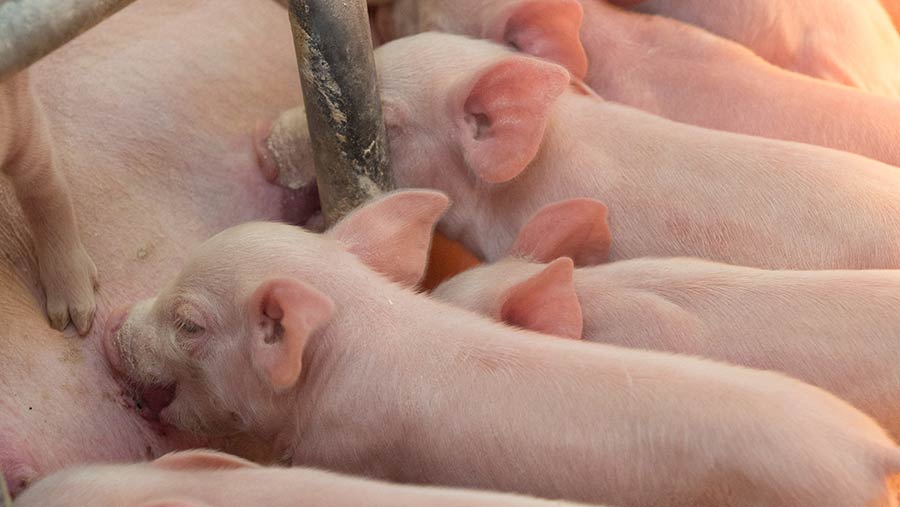Slatted housing found to harm piglet survival rate
 © Tim Scrivener
© Tim Scrivener Traditional housing systems can raise stress levels in sows, which could affect the development and survival rates of piglets, scientists have discovered.
Sows housed in slatted systems during gestation have higher levels of cortisol – a hormone released in response to stress that can suppress the immune system – than sows housed in enriched systems.
A study by researchers at French research organisation INRA found sows with higher levels of cortisol were more likely to have litters with stillbirths or early mortality (deaths occurring up to three days after a piglet’s birth).
See also: Striving to breed a 5t sow would be counterproductive
In the study, 106 cross-bred sows were split into two groups, with one group housed in a conventional system with slatted floors and 2.4sq m of space a sow. The other group was housed in larger pens with enriched straw bedding.
At 105 days of gestation – 10 days before parturition – all of the sows were moved to similar farrowing pens with slatted floors.
Higher mortality rate
Researchers discovered that during gestation, sows housed in conventional systems had significantly greater concentrations of cortisol than sows in the enriched systems, but once they were transferred to farrowing booths the levels of cortisol matched those of the sows in the other group.
However, the overall piglet mortality rate was greater in the conventional system, with 25.8% of piglets either stillborn or dying before weaning, compared with 16.7% in the enriched system.
Helene Quesnel, one of the scientists behind the study, said while the difference wasn’t substantial, piglets in the conventional system tended to be smaller, had lower temperatures an hour after birth and smaller guts in relation to body weight.
They also had lower levels of glycogen in their muscles and liver, suggesting piglets in conventional systems were slightly less developed and had lower energy reserves.
Maternal stress management
Speaking at the European Federation of Animal Science earlier this month, Dr Quesnel said the findings could have implications for management techniques in intensive pig systems.
“It’s known in intensive pig husbandry that housing and management for sows can generate maternal stress and maternal stress during gestation has negative effects on health,” she told delegates.
High concentrations of cortisol in sows during gestation may influence development of piglets and the way their bodies make use of nutrients, giving them less chance of survival, she added.
“Body weight gain didn’t differ in the first 24 hours after birth, and colostrum intake was similar between the two systems, but the stress the sow experiences during gestation is linked to increased mortality.”
